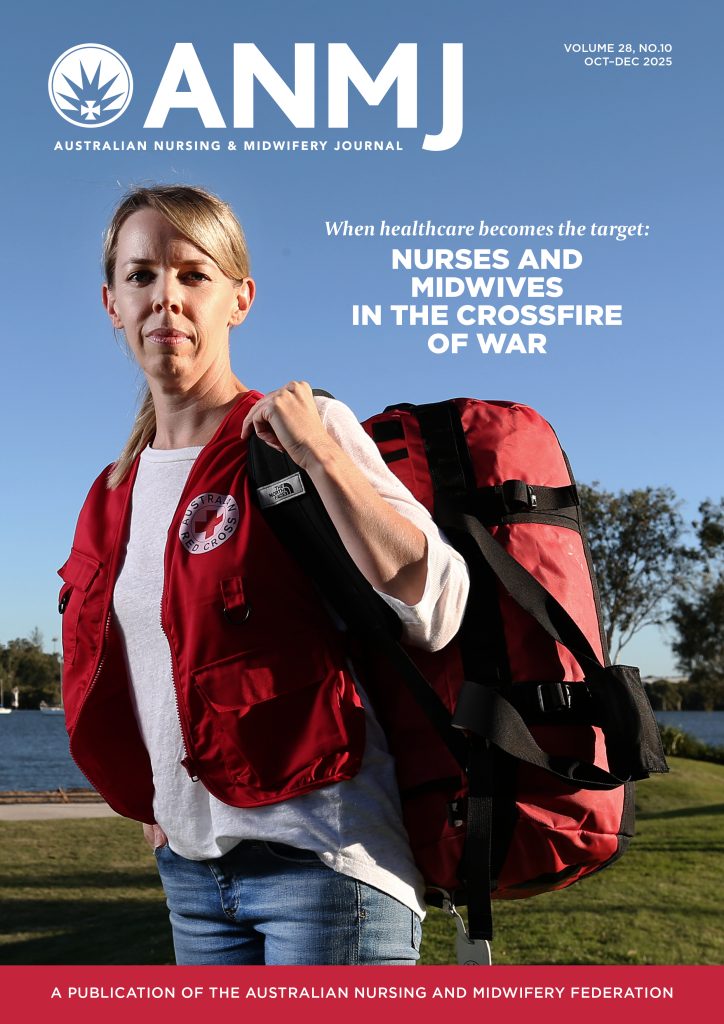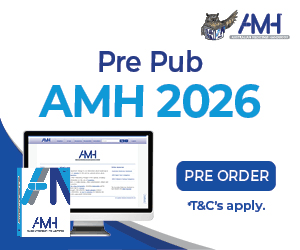Volume 42, Issue 2 of the Australian Journal of Advanced Nursing (AJAN) is now live. As the official peer-reviewed journal of the Australian Nursing and Midwifery Federation (ANMF), AJAN is committed to publishing high-quality scholarly work that is of critical relevance to nursing and midwifery audiences in professional, clinical, research, education, management, and policy roles.
This issue focusses on climate change and disaster management, team resilience in nursing, nurses’ knowledge attitudes and practices in palliative care, the causes of surgical discharge delays, perimenopause and menopause information for Aboriginal and Torres Strait Islander women, and the concept of effect size and its application.
This issue opens with an editorial by Catelyn Richards, ANMF’s inaugural Climate Change Officer. This article examines the essential, yet often overlooked, role of nurses and midwives in disaster management. While these professionals are central to frontline response during crises, they are frequently underrepresented in policy development and funding decisions. Richards highlights the consequences of this absence and offers practical recommendations to strengthen the sector’s capacity to respond to the health impacts of climate change.
A research article by Astrid Hirt and colleagues investigates nurses’ perceptions of team resilience within the context of ongoing change and evolving practice. Drawing on qualitative data from semi-structured group discussions with registered nurses at a Swiss rehabilitation clinic, the study reveals that while team resilience is both relevant and impactful, it remains under-recognised and insufficiently addressed in clinical practice.
Alexandra Masharipova and co-authors present findings from a cross-sectional survey of nurses in primary health care settings in Kazakhstan. The study explores nurses’ knowledge, attitudes, and practices regarding palliative care, revealing significant gaps in understanding and generally neutral or negative attitudes toward caring for dying patients. The authors advocate for enhanced palliative care training and curriculum reform to better support nurses in delivering compassionate, informed care.
Jolene Jones and colleagues contribute a mixed-methods study that explores the causes of discharge delays in an acute surgical unit in New Zealand. Their findings point to the need for system-wide optimisation, with a particular focus on streamlining administrative processes. The authors suggest that introducing a ‘discharge-focused clinician’ and improving the utilisation of transit lounge will especially help to reduce discharge-delay.
In our review section, Professor Odette Best and colleagues present a study investigating whether Aboriginal Community Controlled Health Organisations (ACCHOs) provide accessible information on perimenopause and menopause for Indigenous women in Australia. Of the 114 ACCHOs reviewed, only two offered relevant resources. The authors underscore the urgent need for Indigenous-led research and the development of culturally safe educational materials to meet the specific needs of Aboriginal and Torres Strait Islander women.
Finally, Duncan McKechnie offers a methodological discussion paper based on his experiences as a clinician and researcher. The article explores the concept of effect size and its application in both clinical and empirical settings. McKechnie provides clear explanations of different effect size measures and discusses their utility in assessing patient change and informing evidence-based practice.
We thank all contributors and reviewers for their thoughtful work and dedication to advancing nursing and midwifery scholarship. We hope the articles in this issue provoke critical discussion, inform best practices, and inspire continued innovation across the profession.
Read the latest AJAN issue here








